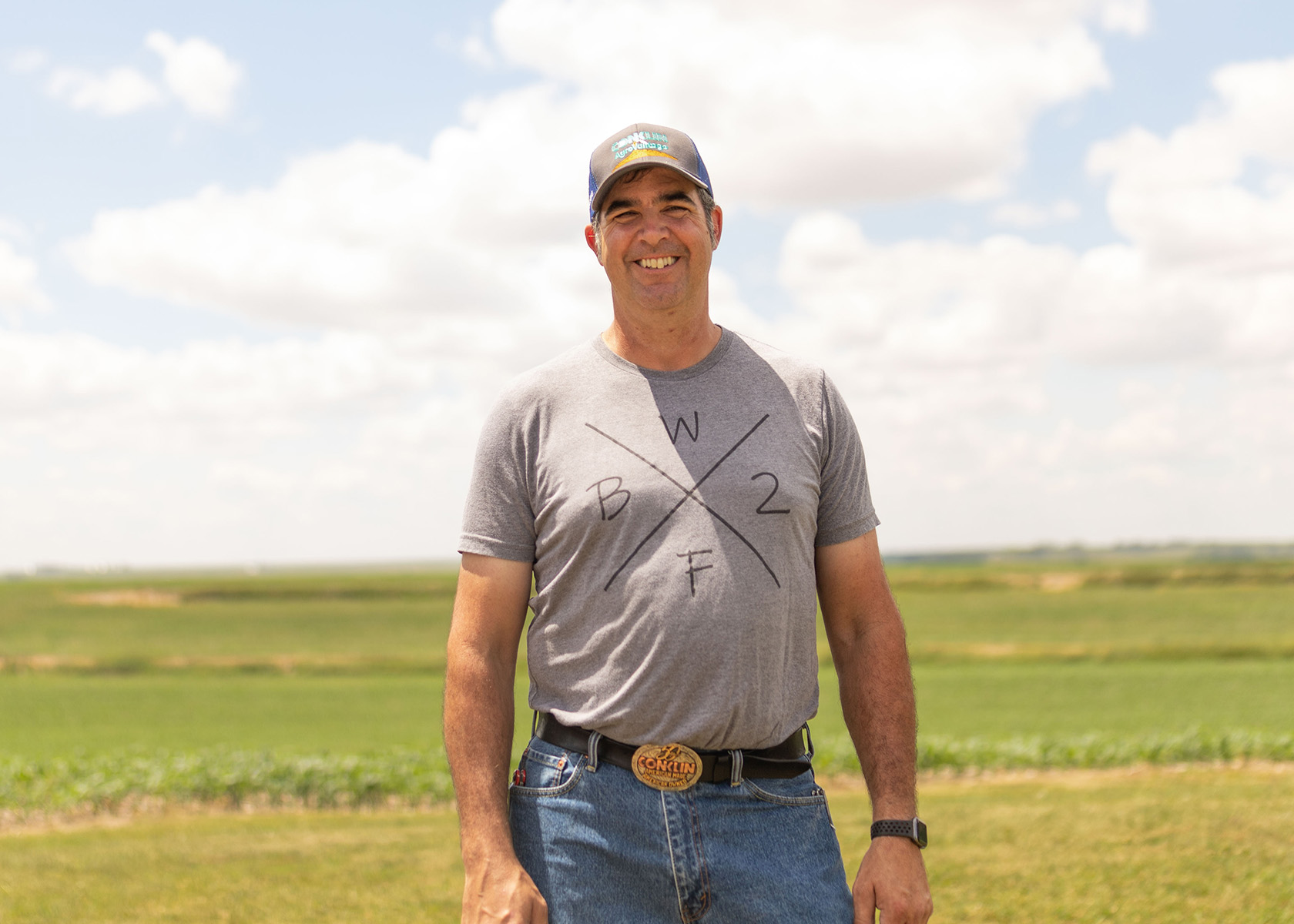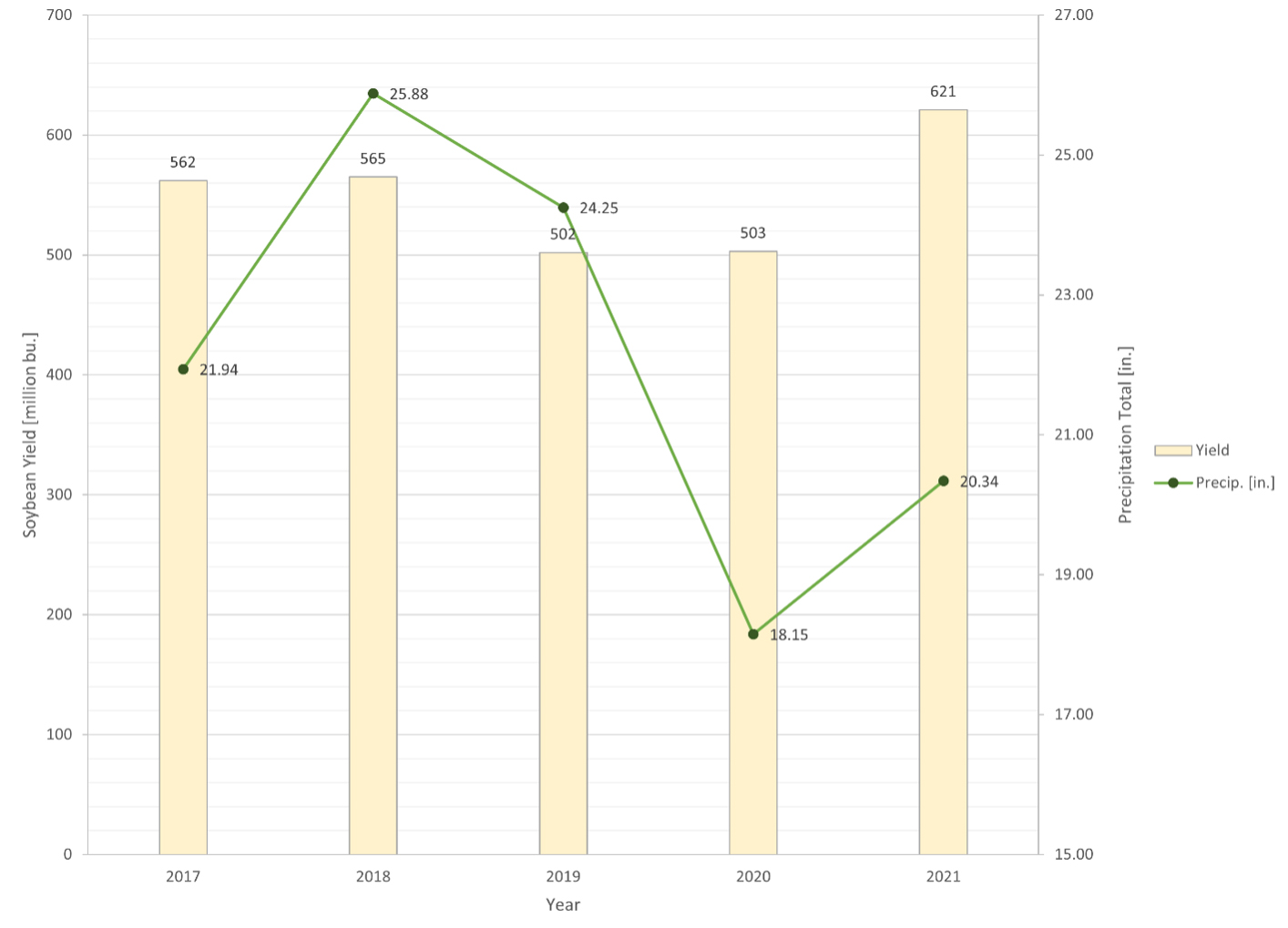
(Photo: Joclyn Bushman/Iowa Soybean Association)
Genetics, fertility can help drought-proof crop acres
April 21, 2022 | Bethany Baratta
Nearly three-quarters of Iowa was covered by drought or abnormally dry conditions in 2021. However, Iowa farmers produced a record 621.86 million bushels of soybeans. Many farmers in the state were surprised with their final yields, Preston Grobe included.
“We had the best beans farm average-wise we’ve ever had,” says Grobe, an ISA farmer-member near Avoca in west central Iowa.
He attributes quality genetics, soil fertility practices and just-in-time rains to his soybean crop’s success at 85 bushels per acre.
State Climatologist of Iowa Justin Glisan says the state is short on subsoil moisture but faring better than last year at this time.
Though some areas of the state saw measurable snow this winter, soils were frozen and didn’t get the water equivalent moisture. December 2020 through February 2021, defined as the meteorological winter, ranked as one of the 16th driest on record.
“We have some muddy surfaces due to the freezing and thawing effects, but generally we’re seeing drier conditions as we approach the growing season,” Glisan says.

Double dip
Drought is expected to persist in parts of north central, east central and west central Iowa through June, according to the initial April outlook from the National Weather Service’s Climate Prediction Center (CPC) released on March 17. There’s also an elevated probability of warmer temperatures through June for the entire state of Iowa.
La Nina is favored to continue into the Northern Hemisphere this summer, with a 40 to 50% chance of La Nina or ENSO-neutral thereafter, according to the CPC.
“We call this a double-dip La Nina,” Glisan says. “Typically, we see La Nina in the winter and then transition into ENSO neutral conditions in the spring – between El Nino and La Nina – then we almost always see a secondary La Nina form the next winter, and that’s what happened.”
The outlook mirrors last year’s dry weather and below-average rainfall, where drought expanded into various parts of Iowa.
“Overall, if you look at the 2021 growing season we had those million dollar rainfalls right when we needed them,” Glisan says.
Grobe hopes to catch more timely rains – ones that will benefit both soybeans and corn. Last year’s corn crop varied widely, with a 50-bushel per acre yield swing within fields due to the timing of some too-little, too-late rainfalls during an abnormally dry moderate drought year.
He attributes his fertility program, including biological products and seed genetics, for providing some drought tolerance for last year’s crop.
“Genetics and fertility go hand in hand to drought-proof as much as we can,” Grobe says.
He plans to stick to his rotation, which leans a little more toward corn this year, despite the expected dry conditions.
“I’m an optimist,” Grobe says. “I feel that genetics and fertility have come a long way in helping to protect the crop – you just have to be willing to adopt the practices.”
Back